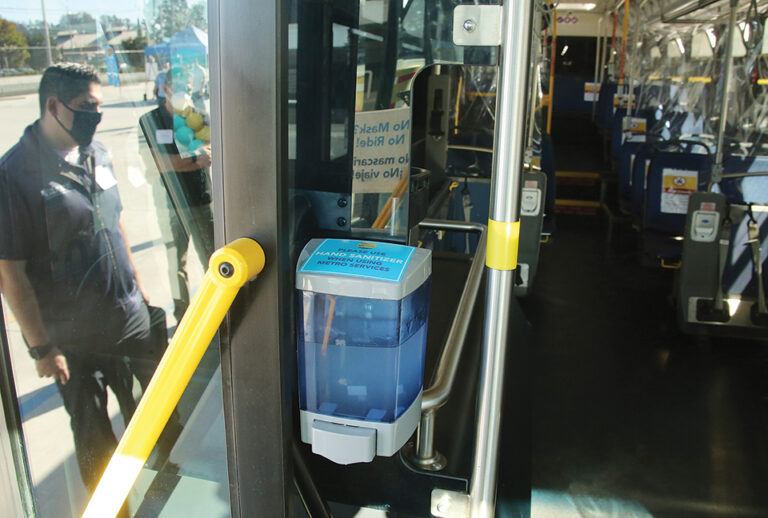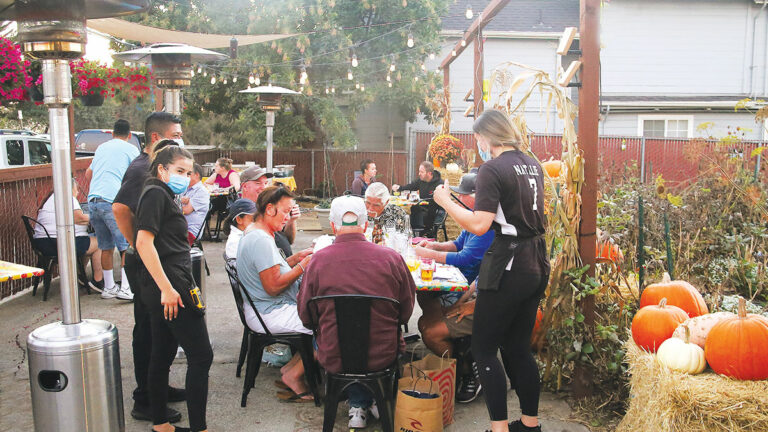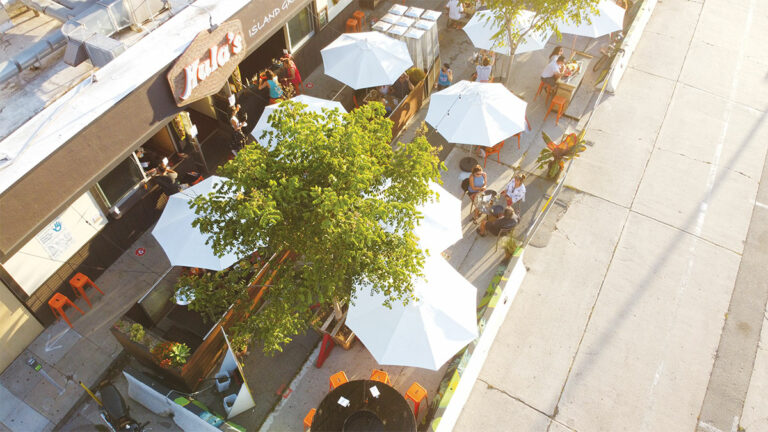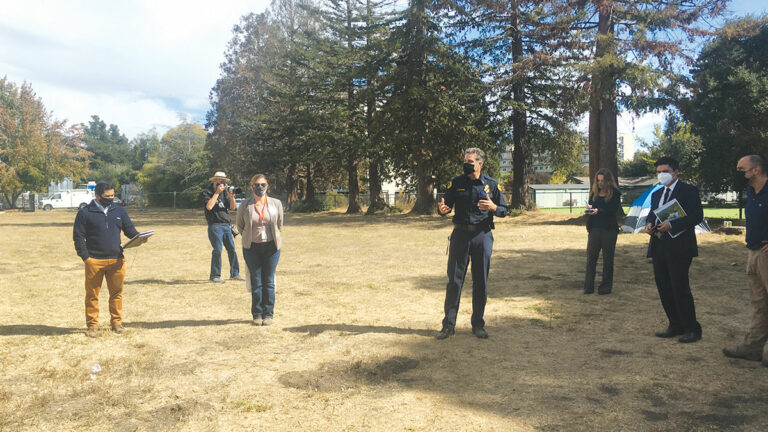Because many in-person events across Santa Cruz County have been canceled or postponed during the pandemic, Good Times is compiling a weekly list of virtual events hosted by local nonprofits, artists, fitness instructors and businesses. To submit your virtual event, send an email to ca******@go*******.sc.
ARTS AND MUSIC
VIRTUAL EXHIBITION TOUR: QUEER SANTA CRUZ Celebrate LGBTQ pride month in a 35-minute virtual tour of Queer Santa Cruz. Travel back to the 1970s to uncover our local queer history, from early trailblazers to modern day movements. Time for questions and conversation will follow the event. Free. Wednesday, Oct. 21, 3-4pm. Learn more at: santacruzmah.org/events/virtual-tour-queersc/2020/10/21.
IMAGINE DISABILITY FILM FESTIVAL Friday, Oct. 23: Save the Date! Imagine is happy to announce our Ninth Annual Disability Film Festival to be held at the Santa Cruz Beach Boardwalk River Parking Lot. Imagine hosts an annual film festival event meant to empower artists with disabilities and raise awareness in our community. Each film is either directed by, starring, or about people with disabilities. This year we have put together a very special event unlike any of our past film festivals. The Santa Cruz Beach Boardwalk has helped us create an event that you can safely attend and participate in from your vehicle. We will be reprising some of the films shown in our past film festivals and adding a very moving feature film, “The Peanut Butter Falcon.” We hope that you will join us in celebrating the work of artists and creators with disabilities and their stories. This event is free of charge! Our goal is to create awareness that reaches as much of our community as possible. If you are able to make a donation to keep this event going please do so when registering for tickets. Don’t forget to register for your free tickets! Only vehicles with tickets will be allowed into the event. If you are an individual with a disability and require accommodations in order to attend this event, please feel free to contact pa***@im********.org! We look forward to seeing you there! Learn more at: imaginesls.org/film-festival.
ANNUAL LIVE OAK GLASS PUMPKIN PATCH The Santa Cruz Glass Pumpkin Patch at Live Oak Grange Returns with golden leaves and autumn breezes! Beautiful handmade glass pumpkins and gourds created in the glass blowing studio of local glass artist Chris Johnson. A dazzling array of colors, in all sizes and for every budget. We are delighted to again be in the heirloom fruit garden at historic Live Oak Grange on 17th Avenue. Five percent of all proceeds will be donated to the Grange to sustain their awesome work in the community. Join us Saturday and Sunday, Oct. 24-25, 10am-4pm. No purchase required. All are welcome to come enjoy the outside garden of beautiful art glass! One weekend only. Live Oak Grange, 1900 17th Ave., Santa Cruz. Come by and put your name in the box to win a pumpkin handmade by Chris Johnson.
CATAMARAN ART SHOW AT R. BLITZER GALLERY Starved for real live artwork? Then don’t miss the Seventh Annual Catamaran Show at the R. Blitzer Gallery, featuring a curated array of original artwork from Linda Christensen, David Ligare, UCSC alumna Julie Heffernan, Frank Galuszka, Noah Buchanan, Joao De Brito and Philip Rosenthal. While you’re there don’t miss artworks by Robert Blitzer, Alan Sonneman, Rand Launer and handmade stringed instruments by luthier Charles Sutton. Open now through Nov. 27. Tuesday and Thursday noon-5 pm or by appointment. Strict Covid-19 protocols followed (masks, five or six people at a time, social distancing). R. Blitzer Gallery, 2801 Mission St., Santa Cruz. 831-458-1217.
CLASSES
THE BASICS OF TAXIDERMY Learn what you need to know to dive into taxidermy as a hobby. During this webinar, Alex Krohn will share the basics of preserving animals, the laws surrounding the process in California, and an overview of necessary tools, before diving into an example on an Acorn Woodpecker specimen. Register for link to Zoom webinar: santacruzmuseum.org/10-27-the-basics-of-taxidermy-with-alex-krohn. This program is part of the Halloween series, Museum of the Macabre, presented by the Santa Cruz Museum of Natural History. Alex Krohn is the Assistant Director of the Kenneth S. Norris Center for Natural History at UCSC. While he is a reptile and amphibian specialist, he loves helping connect people with all aspects of nature, both in the museum and across the natural lands of Santa Cruz County. Tuesday, Oct. 27, 1-2pm.
BREASTFEEDING BASICS This is a virtual class that will help you learn the information you need for getting breastfeeding off to a good start. This one-session class will cover how to ensure a good milk supply, techniques for getting a good latch, how to know if your baby is getting enough, and ways you can avoid common problems. Recommended for mothers in mid-to-late pregnancy. Support person welcome. Please register for the PEP class session. Only after you have completed this process, the zoom meeting information will be provided to you via email prior to your class. For further information, please call The Dominican Lactation Warm Line at 831-462-7862. Wednesday, Oct. 21, 6:30-8:30pm.
NAMI FAMILY-TO-FAMILY CLASS NAMI’s Family-to-Family Class is an eight-week educational program for family and friends of adults with mental health challenges. Learn about how to support your loved one, gain valuable communication and coping skills, and become educated on the latest mental health research. Class is led by two trained volunteers with lived experience caring for someone with mental health conditions. Sign up online and learn more at namiscc.org/family-to-family.html. Mondays and Wednesdays at 6pm.
CHILDBIRTH EDUCATION WEEKEND EXPRESS CLASS This Saturday and Sunday virtual class from Dominican Hospital is intended for expectant mothers and their labor support team. Focus will be on the birth process, including the stages of labor and when to go to the hospital. Non-pharmaceutical coping techniques for pain, including breath work, mindfulness practices, supportive touch and positions for labor and birth, along with standard hospital procedures, pain medication options, medical interventions, cesarean birth, postpartum recovery, newborn procedures and breastfeeding basics. In this class, we will actively practice positions and coping techniques for pain, so please be dressed for movement. Please register for the PEP class session. Only after you have completed this process, the Zoom meeting information will be provided to you via email prior to your class. Classes run 1-5:30pm on these days: Oct. 24-25, Nov. 14-15, Dec. 19-20.
COMMUNITY
ACCESS TO EMPLOYMENT JOB FAIR Join us for Santa Cruz County’s largest job fair! Free for employers and job seekers! Explore local employers, staffing agencies, and community resources. Discover a broad range of open positions, including: entry-level or mid-level positions for recent graduates and young alumni; high-level careers for applicants with leadership and experience; and internships and volunteer opportunities for students. Register today at: eventbrite.com/e/job-fair-tickets-104370358552. For additional information, visit access2employment.com. Thursday, Oct. 22, 1pm.
PARENTING WORKSHOP SERIES This is a free series of workshops to support parents during these difficult times. There will be a Kids Zoom Hour run at the same time so that you can attend the workshop. Each Kids Hour will be sponsored by a different organization, such as the Santa Cruz Beach Boardwalk, Santa Cruz Children’s Discovery Museum, and Santa Cruz Public Library. All workshops will take place from 3-4:30pm on Zoom. Tuesday, Oct. 27, workshop: Supporting Children with Special Needs in Distance Learning. Register at: santacruz.k12oms.org/1284-191085.
2020 BE THE DIFFERENCE AWARDS ONLINE CELEBRATION The Volunteer Center of Santa Cruz County is excited to host the 2020 Be The Difference Awards! This event annually brings together civic and business leaders, nonprofit champions, and trailblazers for good to celebrate the top individuals, groups, nonprofits, and businesses who do the most to transform our community through volunteerism. While there will be no in-person gathering this year for the annual gala, the Volunteer Center and partners will honor all selected nominees through the Be The Difference Awards Online Watch Party Celebration on Wednesday, Oct. 21, at noon. You can expect an hour of entertainment and inspiration with local musicians, community leaders, and your favorite local heroes—all in celebration of volunteers. Do you want to take an extra step to honor volunteers and help the Volunteer Center sustain this great event? Become a Friend of the Be The Difference Awards. Donate $50 or more to be entered into a drawing to win a Warriors jersey signed by Draymond Green. Also, thanks to a meal deal with Woodstock Pizza, you can order your lunch on the day of the event and support the Volunteer Center at the same time! Learn more at: scvolunteercenter.org/events-2/be-the-difference-awards.
EVENING TOASTMASTERS ONLINE OPEN HOUSE The Evening Toastmasters Club 3802 invites residents to its online open house to meet members and watch special guest speaker, Belinda Mei, a seasoned project manager, talk about how Toastmasters has brought change to her life. The open house will be hosted online using the Zoom video sharing. Meeting begins at 6:30pm, and attendees are encouraged to join at least 15 minutes prior to start. After hearing from special guest Belinda Mei, members and guests will enjoy a regular Toastmasters meeting that will include prepared speeches, Table Topics™ (impromptu speeches) and evaluations. Lisa Hamil, who has served in various club positions, will be the Table Topics master. Alex Hardy, Owner of Hardy Roofing, Inc., will also be speaking. Monday, Oct. 26, 6:30-8pm. Online via Zoom. For more information, email co**********@to***************.org or use the Contact Us link on the club’s website at evening.toastmastersclubs.org.
TALES TO TAILS GOES VIRTUAL SCPL’s early childhood literacy program, Virtual Tales to Tails, has moved to a new time slot: Mondays, 3:30-4:30pm. At the end of your school day, hop online and have fun reading at your own pace to an audience of therapy dogs, cats and other guest animals. Have math homework? Good news! Your furry audience would also love to learn how to count, add and subtract. Register online. Registrants receive reminders, links to the live program, and fun (educational) activities to complete and have showcased on future sessions Learn more at santacruzpl.libcal.com/event/6764938.
GROUPS
VIRTUAL YOUNG ADULT (18-30) TRANSGENDER SUPPORT GROUP A weekly peer support group for young adults aged 18-25 who identify as transgender, non-binary, genderqueer, agender, or any other non-cisgender identity. This is a social group where we meet and chat among ourselves, sharing our experiences and thoughts in a warm, welcoming setting. Our meetings will be held on Discord during the shelter-in-place order. For more info, contact Ezra Bowen at tr***@di*************.org.
LGBTQNBI+ SUPPORT GROUP FOR CORONAVIRUS STRESS This weekly LGBTQNBI+ support group is being offered to help us all deal with stress during the shelter-in-place situation that we are experiencing from the coronavirus. Feel free to bring your lunch and chat together to get support. This group is offered at no cost and will be facilitated by licensed therapists Shane Hill, Ph.D., and Melissa Bernstein, LMFT #52524. Learn how to join the Zoom support group at diversitycenter.org/community-calendar.
OUTDOOR
BIRDS AND FARMS: FRIENDS WITH BENEFITS Homeless Garden Project presents an online conversation with Jo Ann Baumgartner and Jonathan Franzen. Join Jo Ann Baumgartner, the executive director of the Wild Farm Alliance, and author Jonathan Franzen in a conversation about the mutually beneficial relationship between sustainable agriculture and the birds around us on Thursday, Oct. 22, at 5pm. Jo Ann Baumgartner will talk about the latest research on birds as natural pest-control allies, and give practical remarks about how to sustain and encourage healthy bird populations on healthy farms. Jonathan Franzen will discuss the critical role that farming can play in nature conservation. This special, online presentation is free and open to the public. Be sure to register in advance at bit.ly/FarmsBirds to receive the Zoom link. Jo Ann and Jonathan will answer questions following the presentation.
AN EDIBLE EVENING WITH DEBORAH MADISON Homeless Garden Project presents the first event of Sustain in Place: A series of at-home tastings, Saturday, Oct. 24 (6:30-7:30pm), begins with a keynote video presentation from Deborah Madison. A pioneer in the farm to table movement, Deborah will share some secrets to the art of bringing out the best in farm-fresh produce, by leading us through making some of her favorite salad dressings. Guests will also have the chance to come to the farm to harvest your own salad greens, vegetables and herbs along with an accompanying gift bag featuring a bottle of wine and fresh, delicious, gourmet pasta from La Posta restaurant, in a reusable tote bag. Guests will be able to pick up bags from the HGP Farm anytime from 12-6pm on Saturday, Oct. 24. The presentation will be online and be premiered at 6:30pm at a link sent exclusively to attendees. See the full set of ticket options at bit.ly/Deborah4HGP. The Sustain In Place series of at-home tastings are generously sponsored by New Leaf Community Markets, La Posta Restaurant and Mutari Chocolate.
ROCKIN’ POP-UP: CAVES In honor of Halloween, we’re exploring the curious, the scary, and the strange all week during our series, Museum of the Macabre. And what’s scarier than a deep, dark cave? For the special Halloween Pop-Up, Gavin and Graham will explore the different ways that caves form. Wednesday, Oct. 28, 3pm. Watch live on Facebook: facebook.com/SantaCruzMuseumOfNaturalHistory/live_videos. Join the Geology Gents, Gavin and Graham, for monthly conversations about rocks live on Facebook. Each month we’ll explore a different geologic topic, from Santa Cruz formations to tips for being a more effective rockhound. Graham Edwards and Gavin Piccione are Ph.D. candidates in geochronology with the Department of Earth and Planetary Sciences at UCSC.
LABSIDE CHATS: CONVERSATION WITH A SCIENTIST Tune in for the Seymour Center’s next Labside Chat with Caroline Casey, research associate at UCSC, on Thursday, Oct. 22, at 11am, to explore the fascinating behavior of northern elephant seals. Join the conversation! Submit your questions in advance for Caroline, then watch the conversation to hear the answers during the live streamed chat. Visit the Seymour Center’s website to submit your questions in advance and to access the livestream: seymourcenter.ucsc.edu/learn/ongoing-education/labside-chats. Labside Chats are offered at no charge. Please support the Seymour Center by becoming a member or making a donation today at seymourcenter.ucsc.edu/get-involved/join or seymourcenter.ucsc.edu/get-involved/donate/make-a-donation.
JUST TRANSITION: RESTORATIVE ECONOMICS AND THE FUTURE Winona LaDuke is an environmentalist, economist, and writer, known for her work on tribal land claims and preservation, as well as sustainable development. She co-founded Honor the Earth to create awareness and support for Native environmental issues and to develop needed financial and political resources for the survival of sustainable Native communities. Honor the Earth develops these resources by using music, the arts, the media, and Indigenous wisdom to ask people to recognize our joint dependency on the Earth and be a voice for those not heard. Part of the Environmental Justice and Sustainability Speaker Series at the Middlebury Institute of International Studies. Free, open to public, no registration required. Learn more at: middlebury.edu/institute/events/just-transition-restorative-economics-and-future-winona-laduke-10-22-2020. See all lectures in the series at: go.miis.edu/sustainability. For questions, contact Rachel C., Center for the Blue Economy, cb*@mi**.edu or 831-647-4183 (leave message to receive call back). Thursday, Oct. 22, 12:30pm.
WHEN LOVE LEADS TO LAWS: HOW TO SAVE CALIFORNIA’S COAST The ocean draws people to it for restoration and relief from inland heat. But our beaches are predicted to vanish, our coastal cliffs to erode. The battle between those who hold title to coastal land and those who hold only a constitutional right is, like our climate, only getting hotter. Join speaker Amanda Sackett, California policy coordinator at the Surfrider Foundation, as she discusses how interpretation of the California Coastal Act will determine whether or not our beloved beaches and coastal habitats survive the rising seas. Part of the Center for the Blue Economy Speaker Series at the Middlebury Institute of International Studies. Free, open to public, no registration required. Online via Zoom. Learn more at: go.miis.edu/sustainability. For questions, contact Rachel C., Center for the Blue Economy, cb*@mi**.edu or 831-647-4183 (leave message to receive call back). Tuesday, Oct. 27, 6pm.

























